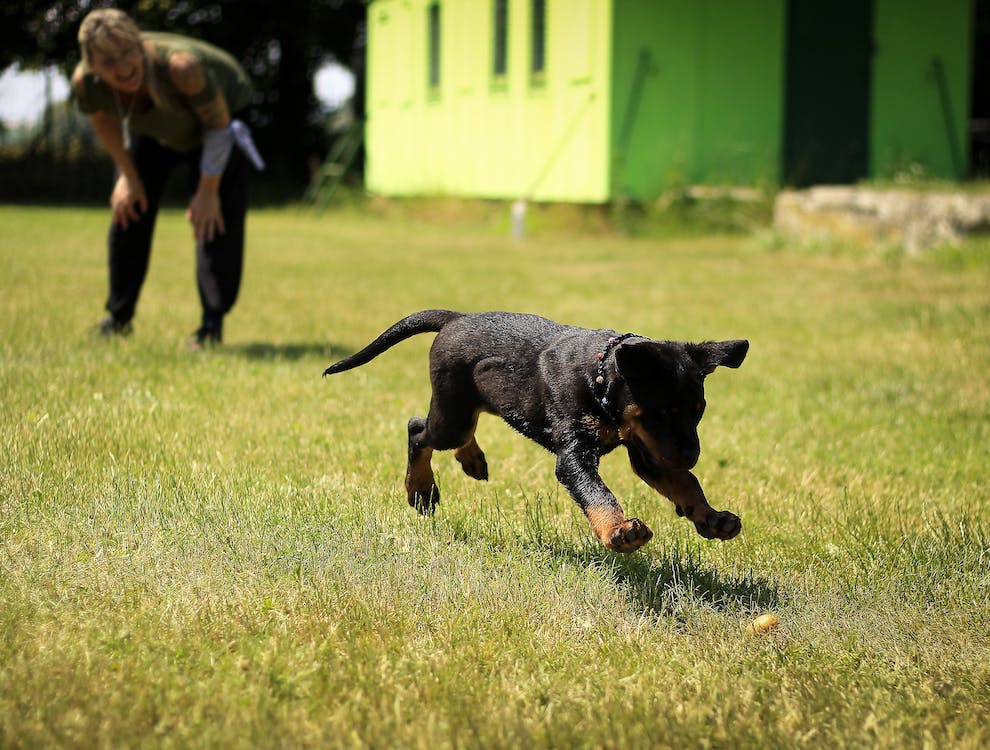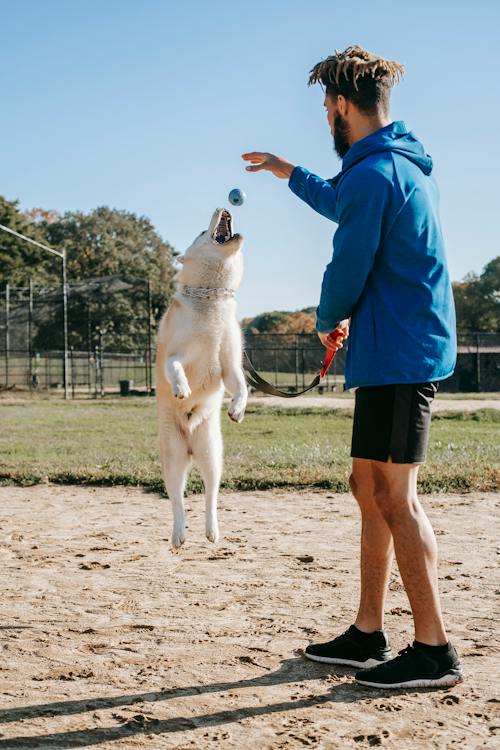Training and housetraining your dog is sometimes a difficult task. At The Puppy Place, we have developed these basic guidelines for housetraining and training your dog against problem chewing and biting.
Housetraining Your Dog
In general, a dog will not soil the area it lays in. Therefore, if they are confined to a small area (for training purposes) they will not use it as a restroom. Instead, they will wait until you take them outside.
The best way to confine your dog for this purpose is to place them in a crate, Kennel cab or puppy exercise pen for 2 to 4 hours at a time. After the time is up, take your dog outside to relieve itself.
When your dog relieves itself in the proper place, reward him/her! A freeze-dried liver treat is ideal because it’s odorless, light, and most dogs enjoy them. This pattern of rewards for correct behavior should be followed for 2 to 4 weeks, after which your dog should be housetrained.
No Biting
Thank You / Take It teaches a dog to gently take an object and release it when told. We like Thank You as a polite variation of the Let Go command, but telling your dog to “drop” or “give” would work as well. Whichever command you choose, using it consistently is the key.
Show Fido the toy, wiggle it, and then say “Take it.” Hand him one end while you’re holding the other. Hang on while Fido plays for a moment, then say “Thank you” and remove it from his mouth.
Teach the release by saying “Thank you” and touching the side of Fido’s tongue. There’s a gap behind the fangs, where the tongue is visible even with the teeth closed. Most dogs will release a toy when you touch the side of the tongue there. (For those who won’t release, hold a tasty treat off to the side so the dog must release the toy to get the yummy.)
Praise Fido for releasing. Then offer the toy, saying “Take it.” When he does, praise him and let him play with the toy while you hold it. Then give the Thank You command again. Repeat the exercise about five times. End the game with Take It and let Fido keep his toy.
Fido will learn to give up objects because you’ll make it so much fun when you hand them back. He’ll learn not to fear when he sees reaching hands and not to be over possessive.
Tug-Of-War
Most experts agree that Tug-of-War teaches dogs to compete against their handlers, and they advise against this aggressive game. That’s certainly true of Tug-of-War, but Tug-of-Peace is different. It teaches self-control, instead, and provides an “off switch” for excitement.
Begin by telling Fido to take the toy, then encourage him to tug a little before you ask for it back using the techniques described in teaching Thank You/Take It. When he releases, praise him.
Teach Fido to pull only as vigorously as you do. Let the toy slip through your fingers if he pulls too hard. When you let go without tugging, Fido won’t feel he’s beaten you and may quickly give the toy back, hoping you’ll hold on a bit tighter. Everyone wins Tug-of-Peace because it’s really not a competition; it’s a game of cooperation.
Keep in mind that even though Tug-of-Peace is a positive game, it should be played in moderation. Overly rough tugging can cause a dog neck strain or jaw problems. Children and dogs must be supervised when playing Tug.
Problem Chewing

Do not give your dog old shoes, socks, pieces of wood, or children’s toys to chew. They can be hazardous to a dog’s health and can teach them bad habits.
To further entice your dog to chew the correct toys, you can do the following:
1.) Soak a nylabone in beef or chicken broth for 20 minutes.
2.) Add a little peanut butter or honey to the cracks of a rawhide bone to further attract the dog.
3.) Play with your dogs and these toys for at least 20 minutes a day.
Another aid in correct chewing behavior is the presence of a high-quality kibble dog food diet. This, taken along with a multivitamin supplement, can often help stop problem chewing.
Finally, brisk exercise (walking, running, or playing) can help burn off excess energy that may otherwise be spent chewing on the contents of your house. It will also keep your dog in shape.
Note: You should not rely on the veterinary advice or information provided on this site for diagnosis or treatment of any specific situation. Always consult your own veterinarian for specific advice concerning the medical condition or treatment of your own pet or animal. The Puppy Place disclaims all warranties and liability related to the veterinary advice and information provided on this site.

